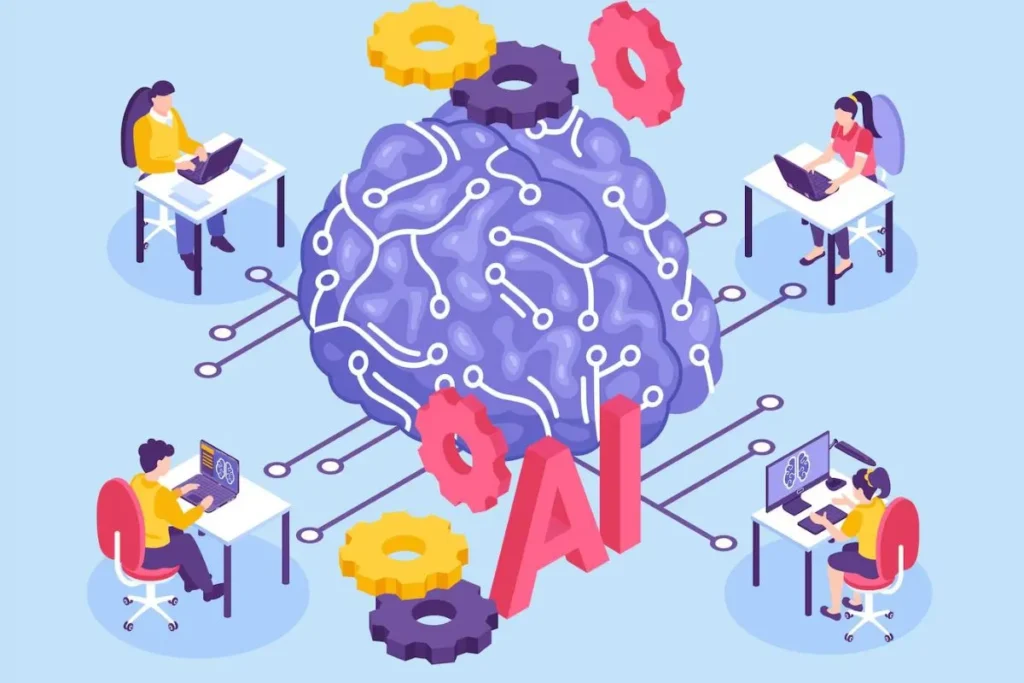Brainwave-Based Learning Enhancement Techniques have emerged as a powerful tool to optimize cognitive functions. These methods, rooted in neuroscience, offer promising avenues for enhancing learning.
Understanding how brainwaves function can significantly impact study habits and cognitive performance. This article delves deep into the mechanisms and benefits.
We will explore various techniques to improve focus, memory, and learning speed effectively.
Understanding Brainwave-Based Learning Enhancement Techniques
Brainwave-based techniques leverage the natural rhythms of the brain to improve cognitive functioning. By synchronizing brainwaves, the brain can operate more efficiently.
These methods include brainwave entrainment, neurofeedback, and brainwave stimulation. Each technique has unique benefits and applications.
By employing these techniques, individuals can potentially enhance their learning abilities and academic performance.
The Mechanics of Brainwaves
Brainwaves are electrical impulses in the brain created by synchronized neuron activity. They are classified into different types based on frequency:
- Delta (0.5 to 4 Hz): Deep sleep and relaxation
- Theta (4 to 8 Hz): Creativity and intuition
- Alpha (8 to 12 Hz): Relaxed alertness and learning
- Beta (12 to 30 Hz): Active thinking and focus
- Gamma (30 to 100 Hz): High-level information processing
Each brainwave type plays a different role in cognitive processes like memory, focus, and learning.
Brainwave Entrainment
Brainwave entrainment involves using external stimuli to synchronize brainwave frequencies. This can be achieved through auditory or visual stimulation.
Techniques such as binaural beats, isochronic tones, and light therapy are common. These methods aim to induce desired brainwave states.
For example, listening to binaural beats at a specific frequency can enhance focus and concentration during study sessions.
Neurofeedback
Neurofeedback is a type of brainwave learning enhancement technique that uses real-time monitoring of brain activity. Participants receive immediate feedback on their brainwave patterns.
The goal is to train the brain to achieve optimal states for learning and cognitive performance. This technique is often used to improve attention and reduce stress.
Studies show that neurofeedback can increase focus, reduce anxiety, and improve overall cognitive functioning.
Benefits of Brainwave-Based Learning Enhancement Techniques
Utilizing brainwave-based learning enhancement techniques can lead to numerous cognitive benefits. Here are some key advantages:
Improved Focus and Concentration
Brainwave entrainment and neurofeedback can significantly enhance focus. By optimizing beta brainwave activity, individuals can maintain attention for longer periods.
This is particularly useful for students and professionals who require sustained concentration. Improved focus leads to more effective study sessions and better retention of information.
Studies have shown that individuals using brainwave techniques report reduced distractions and increased cognitive clarity.
Enhanced Memory
Memory enhancement is another critical benefit of brainwave learning enhancement techniques. Alpha and theta brainwaves are integral to memory formation and retrieval.
By stimulating these brainwave frequencies, it is possible to improve both short-term and long-term memory. This can lead to better academic performance and retention of learned material.
Techniques like neurofeedback have been shown to significantly boost memory recall and cognitive agility.
Increased Learning Speed
Brainwave techniques can also accelerate the learning process. By facilitating optimal brainwave states, individuals can process information more quickly.
Beta and gamma brainwaves, associated with high-level information processing, can be targeted to enhance learning speed. This is particularly beneficial in fast-paced learning environments.
As a result, students and learners can grasp complex concepts more rapidly and efficiently.
Methods and Applications of Brainwave Techniques
The application of brainwave-based learning enhancement techniques can vary based on individual needs and goals. Here are some practical methods:
Binaural Beats and Isochronic Tones
Binaural beats and isochronic tones are popular auditory techniques for brainwave entrainment. They employ specific frequencies to induce desired brainwave states.
Binaural beats involve listening to two slightly different frequencies in each ear, creating a perceived third frequency. Isochronic tones use regular beats at specific intervals.
These methods are effective in promoting relaxation, focus, and improved cognition.
Light and Sound Therapy
Light and sound therapy are visual and auditory methods employed in brainwave entrainment. They utilize rhythmic light flashes or sound pulses to influence brainwave activity.
Devices like audiovisual entrainment (AVE) machines combine both light and sound for optimal results. These therapies can help in reducing stress and enhancing cognitive performance.
Applications range from improving sleep to boosting focus and mental clarity.
Neurofeedback Training
Neurofeedback is a sophisticated method that requires monitoring and feedback equipment. Participants engage in brain training exercises to modify their brainwave patterns.
Sessions can be personalized to address specific cognitive goals, such as improving memory or reducing anxiety. Over time, the brain learns to maintain optimal states independently.
Consistent neurofeedback training can lead to sustained cognitive improvements and enhanced learning capabilities.
Integrating Brainwave Techniques into Study Habits
Incorporating brainwave learning enhancement techniques into regular study routines can yield significant gains. Here are some strategies:
Consistency is Key
Consistency is crucial when integrating brainwave techniques. Regular practice ensures that the brain adapts and maintains optimal states.
Setting a consistent schedule for brainwave entrainment sessions can help reinforce desired cognitive patterns. This consistency can lead to more predictable and reliable results.
Even short, daily sessions of 10-15 minutes can make a considerable difference in cognitive performance.
Combining Techniques for Synergy
Combining different brainwave learning enhancement techniques can amplify their effects. For example, pairing binaural beats with neurofeedback can provide comprehensive cognitive training.
This synergy can address multiple cognitive areas simultaneously, enhancing overall learning efficiency. Tailoring combinations to individual needs can optimize study habits.
Experimenting with different combinations can help identify the most effective approach for each individual.
Personalizing the Approach
Personalization is important for maximizing the benefits of brainwave techniques. Everyone’s brain responds differently to various stimuli and frequencies.
Experimenting with different methods and adjusting based on feedback can improve results. Personalized strategies ensure that techniques align with individual cognitive goals.
Monitoring progress and adapting techniques accordingly can lead to sustained cognitive and academic improvements.
The Future of Brainwave-Based Learning Enhancement Techniques
The field of brainwave-based learning enhancement techniques is continually evolving. Advances in neuroscience and technology promise even more effective methods.
Future developments may bring more accessible and user-friendly tools. Enhanced understanding of brainwave mechanisms will further optimize these techniques.
As research progresses, the potential for brainwave techniques to revolutionize learning continues to grow.
Expanding Research and Development
Ongoing research is crucial for refining brainwave techniques. Studies continue to explore new applications and benefits.
Investing in research will lead to better understanding and more effective tools. The focus remains on enhancing cognitive performance and learning efficiency.
Collaboration between neuroscientists and educators can accelerate these advancements.
Technological Innovations
Technological advancements are driving improvements in brainwave techniques. Emerging tools offer more precise and customizable options.
Innovations like wearable neurofeedback devices provide user-friendly solutions. These technologies make brainwave enhancement accessible to a broader audience.
As technology evolves, so will the effectiveness and practicality of brainwave techniques.
Integrating Brainwave Techniques in Education
Integrating brainwave techniques into educational systems holds immense potential. Schools and institutions can incorporate these methods into curricula.
Training educators and students in brainwave enhancement can lead to improved academic outcomes. Emphasizing the importance of cognitive health supports holistic education.
Future educational models may routinely utilize brainwave techniques as standard practice.
Summary
Brainwave-Based Learning Enhancement Techniques offer promising avenues for optimizing cognitive functions. Understanding and applying these methods can significantly improve focus, memory, and learning speed.
Consistent practice and personalized approaches are crucial for maximizing benefits. The future holds exciting developments in this field, promising even more effective tools.
Enhance your learning journey with brainwave techniques. Explore various methods, find what works best for you, and unlock your cognitive potential.
Frequently Asked Questions
What are brainwave-based learning enhancement techniques?
These techniques leverage the brain’s natural rhythms to improve cognitive functions like focus, memory, and learning speed.
How do binaural beats enhance learning?
Binaural beats use two different frequencies in each ear, creating a third frequency that syncs brainwave activity for better focus and relaxation.
Can neurofeedback help with academic performance?
Yes, neurofeedback trains the brain to achieve optimal states, improving attention, reducing stress, and enhancing memory.
How often should I practice brainwave techniques?
Consistency is key. Short, daily sessions of 10-15 minutes can yield significant cognitive benefits.
Are brainwave techniques safe?
Yes, when used properly, techniques like brainwave entrainment and neurofeedback are safe and can improve cognitive health.




